Iconic 90s Men’s Fashion and Hairstyles: A Nostalgic Journey
The 90s marked an unforgettable epoch in men’s fashion and hairstyling, defined by a fascinating amalgamation of styles that ranged from grunge to preppy, to the influences of hip-hop and pop culture. It was a dynamic decade for men’s fashion, characterized by a mix of minimalism, grunge, and streetwear influences. In this article, we will embark on a nostalgic journey through the iconic men’s fashion trends and hairstyles that defined an entire generation. We are going to revisit this remarkable era, exploring the clothing choices, accessories, and haircuts that left an indelible mark on the ’90s style landscape.
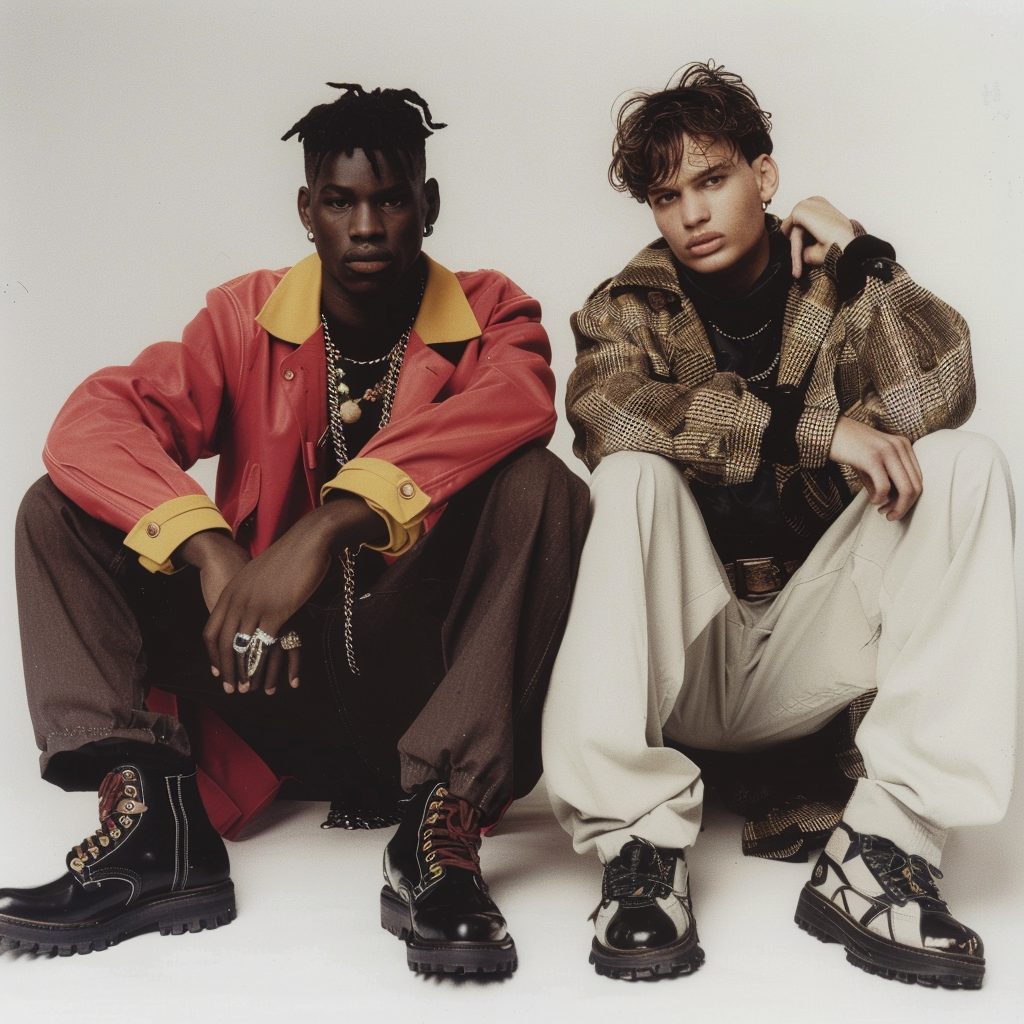
Top 10 most iconic men’s fashion trends from the 1990s:
- Grunge Style: Popularized by bands like Nirvana, this style included flannel shirts, ripped jeans, and oversized knit sweaters, epitomizing a carefree and rebellious attitude.
- Baggy Jeans: This trend saw men wearing loose-fitting and wide-legged jeans, often sagging and paired with oversized T-shirts or hoodies.
- Frosted Tips: In hair trends, frosted tips became popular among young men, influenced by celebrities and pop stars of the era.
- Bandanas and Bucket Hats: Accessories like bandanas and bucket hats were staples in 90s fashion, frequently featured in hip-hop fashion and among sports enthusiasts.
- Tracksuits: Athletic tracksuits, particularly those made by brands like Adidas and Nike, were both a sporty and casual fashion statement during the 90s.
- Biker Jackets: Leather biker jackets continued their popularity from the 80s into the 90s, often worn with jeans and a plain tee, contributing to a rugged, edgy look.
- Logo-centric Clothing: The 90s saw a surge in clothing featuring prominent logos and branding, with companies like Tommy Hilfiger, Ralph Lauren, and Calvin Klein at the forefront.
- Combat Boots: Footwear such as Dr. Martens and other types of combat boots were popularized by the grunge and punk scenes, worn by both genders.
- Windbreakers: Brightly colored windbreakers and other lightweight jackets became popular as part of the larger trend towards sporty, functional clothing.
- Overalls: Overalls, often worn with one strap undone, were a popular casual look that crossed into mainstream fashion from workwear origins.
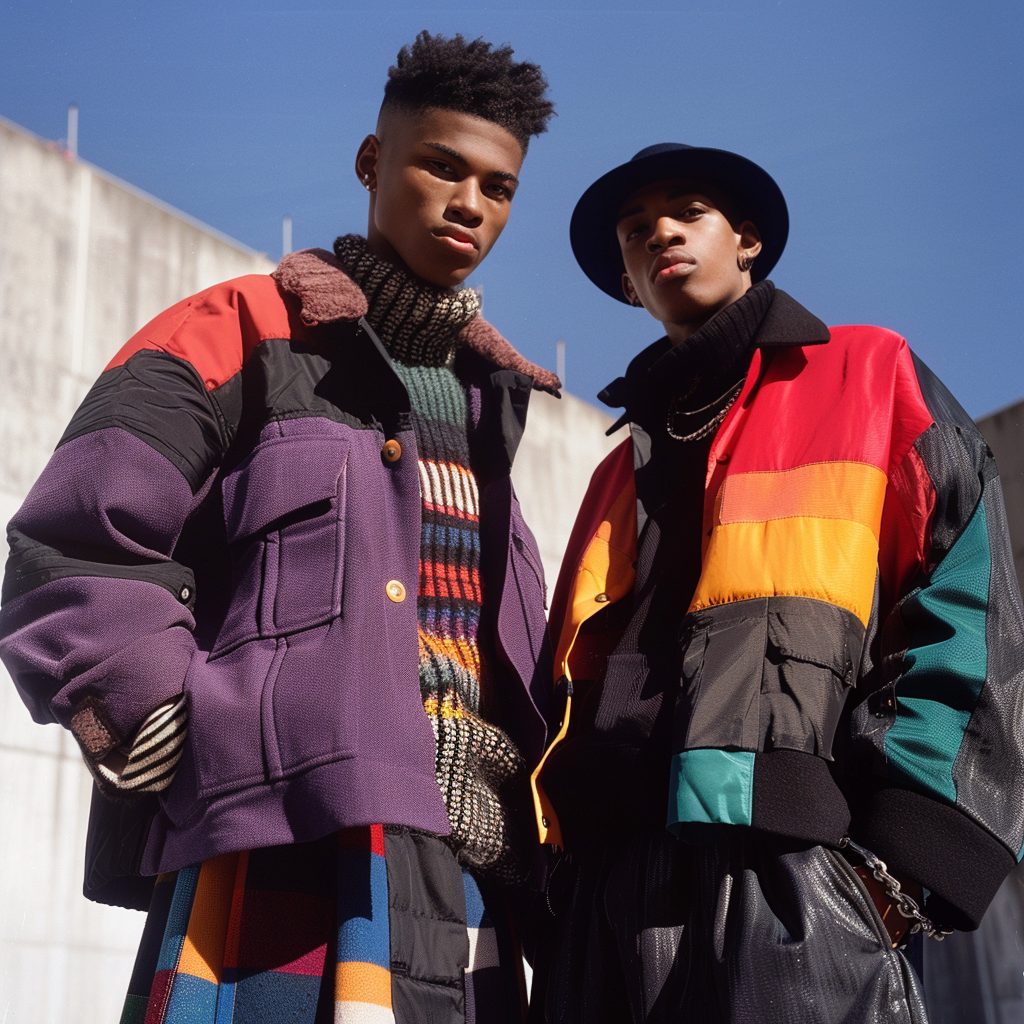
Grunge Fashion: A Symphony of Rebellion
Grunge fashion, one of the defining elements of the ’90s, grew from the rebellious spirit of music legends and underground subcultures. The movement originated in the Pacific Northwest, notably Seattle, where bands like Nirvana and Pearl Jam reshaped the music scene and simultaneously brought forth a fashion revolution.
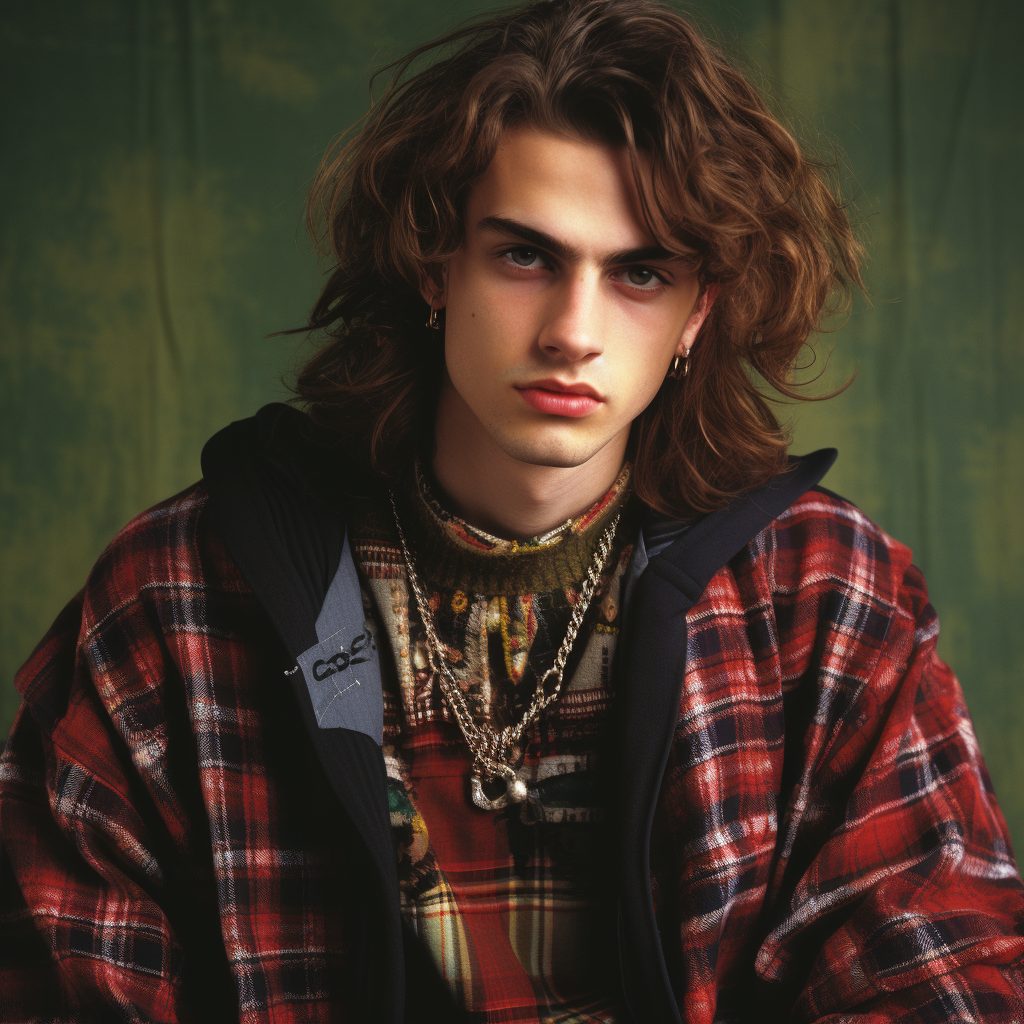
Grunge fashion was a sharp departure from the meticulously curated and polished looks of previous decades. It celebrated a rugged and unpretentious appearance, featuring disheveled hair, flannel shirts, distressed denim, and combat boots. These iconic elements of grunge fashion played a pivotal role in expressing the rebellion and authenticity of the movement.
Beyond the music scene, grunge’s influence extended to high-fashion runways. The juxtaposition of torn jeans and flannel with luxury items created a unique blend of high-low fashion that challenged conventional notions of style.
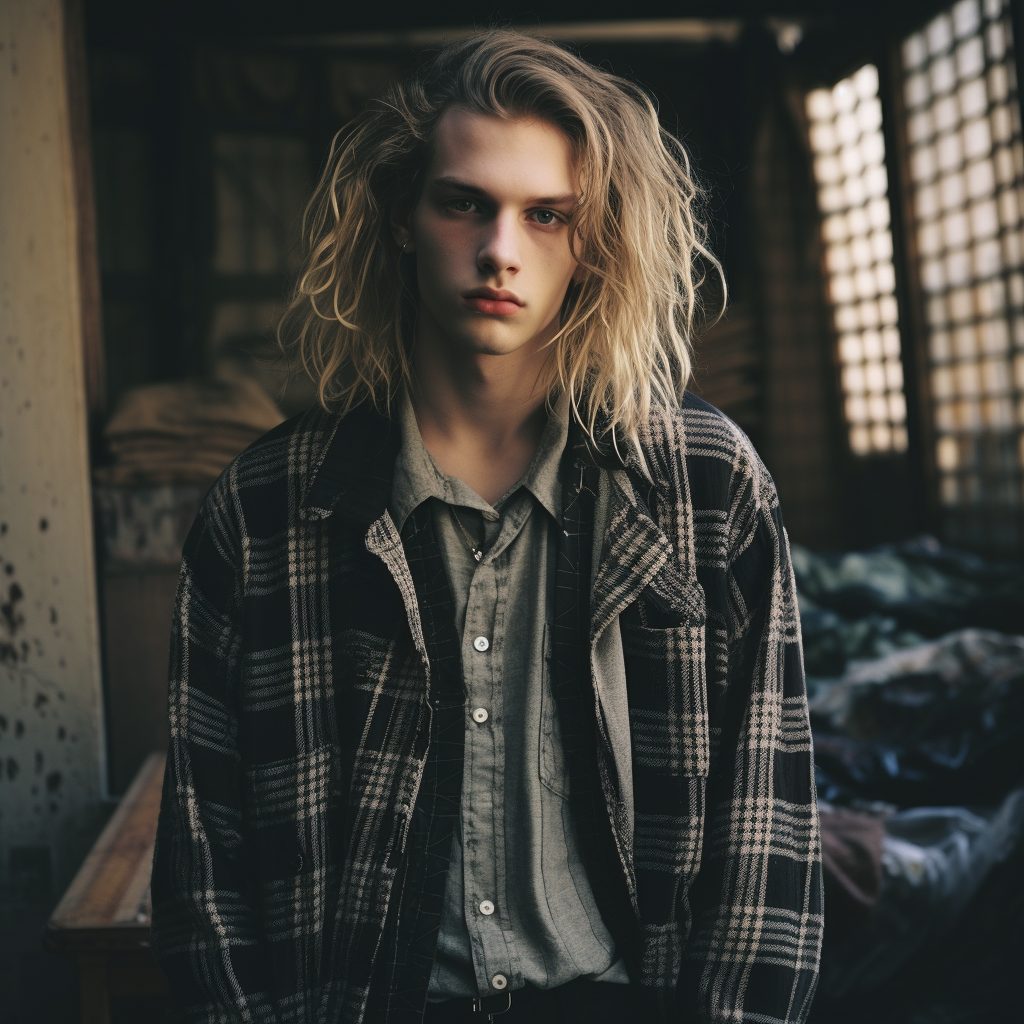
Messy and Anti-Establishment Ethos
In contrast to the minimalist style, which championed simplicity and clean lines, grunge thrived on a deliberately messy and anti-establishment ethos. Grunge style was anything but minimal; it reveled in a certain maximalism of disarray and nonconformity. The ’90s grunge scene, led by bands like Nirvana and Pearl Jam, was a rebellion against the polished and glamorous looks of the ’80s.
While minimalism sought elegance through unadorned designs and a curated selection of essential wardrobe items, grunge style found its charm in the rough edges, the clash of patterns, and the embrace of imperfections. Both styles, however, reflected the cultural shifts of the time, with minimalism reacting against excess and grunge rebelling against conformity. Each had its unique way of expressing a rejection of the status quo, making the ’90s a decade of diverse and contrasting fashion movements.
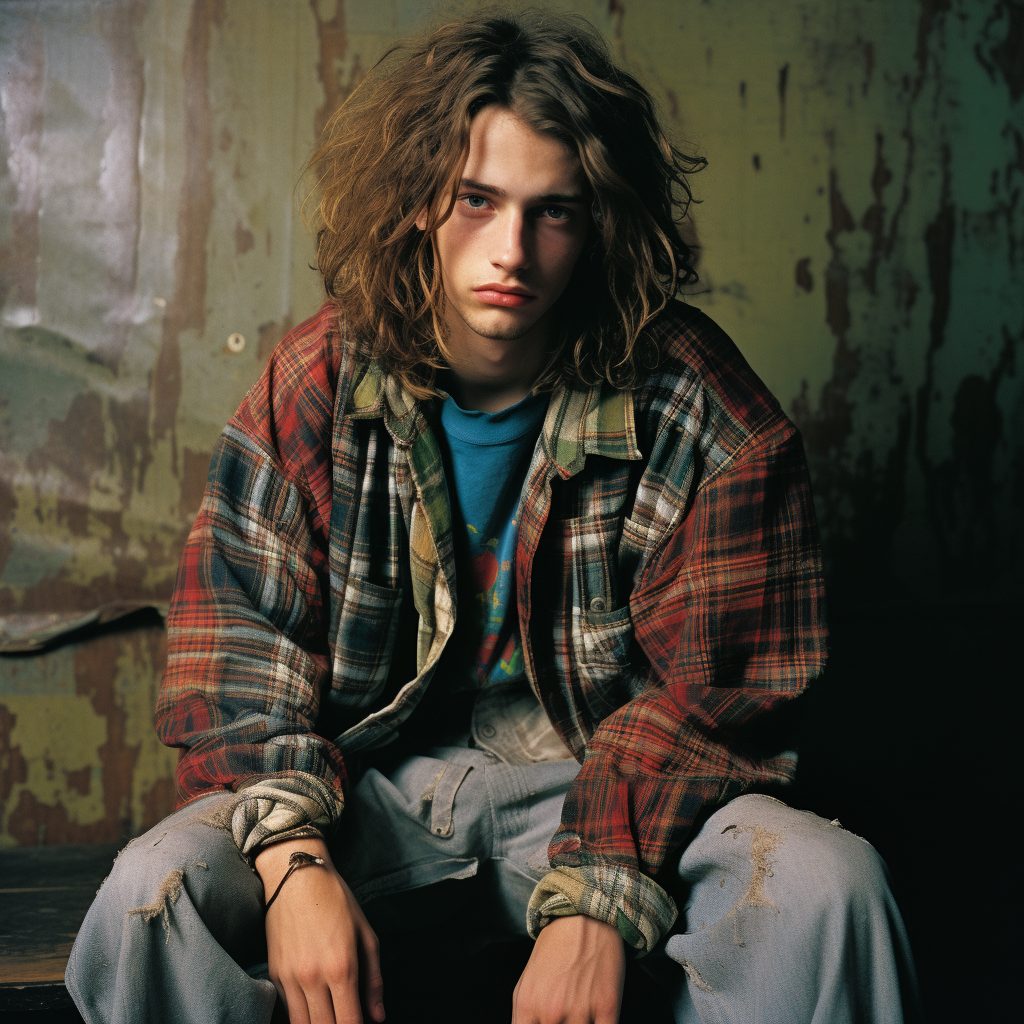
Baggy Jeans and Oversized Everything
Oversized clothing, particularly baggy jeans and loose-fitting tops, became emblematic of ’90s style. The oversized trend signaled a laid-back and casual approach to dressing, influenced by the hip-hop and skateboarding subcultures, reflecting a rejection of the tight-fitting, form-hugging styles of the past. The oversized trend offered comfort, versatility, and a sense of rebellion that captured the zeitgeist of the ’90s. The enduring appeal of this ’90s oversized aesthetic is highlighted, especially in contemporary streetwear fashion.
Hip-Hop Influences: From Street to Runway
The ’90s witnessed the ascent of hip-hop culture, shaping not only the music scene but also leaving an unmistakable imprint on fashion. Icons like Tupac Shakur and the Notorious B.I.G. profoundly influenced clothing choices, giving rise to a distinctive style characterized by sportswear, baggy pants, and athletic sneakers. This era celebrated individuality and self-expression, with artists using fashion as a canvas to convey their unique personalities.
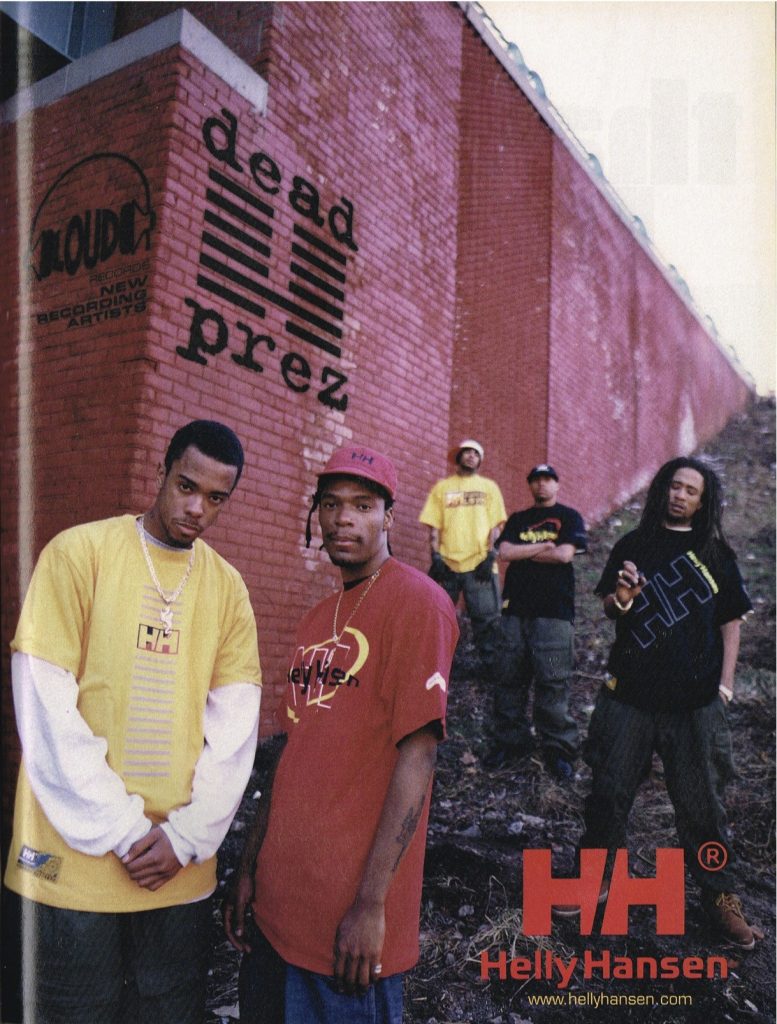
Hip-hop fashion of the ’90s embraced oversized and loose-fitting attire, including tracksuits and baggy pants, reflecting a blend of comfort and street credibility. Iconic footwear, particularly Timberland boots, became emblematic of authenticity and urban resilience, symbolizing a fusion of utility and style.
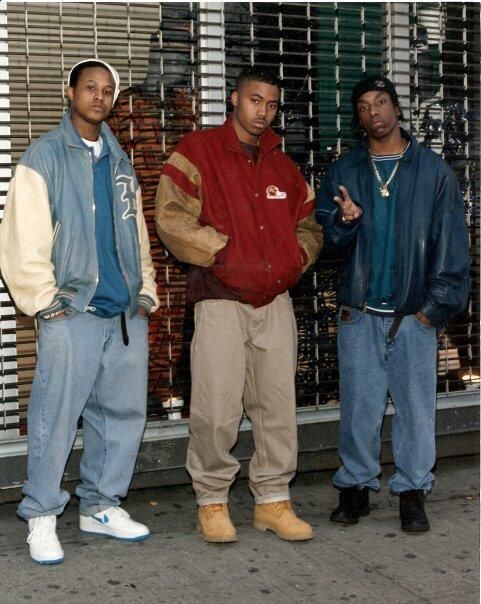
The essence of ’90s hip-hop style lay in the seamless blend of luxury and streetwear. Artists effortlessly paired high-end brands with urban staples, creating a visual language that resonated globally. This fusion continues to influence modern streetwear trends, with designers and enthusiasts drawing inspiration from the bold and unapologetic aesthetic of ’90s hip-hop culture.
Preppy Revival: The Return of Polo Shirts
In the ’90s, preppy fashion experienced a notable resurgence, thrusting polo shirts back into the limelight. This revival marked a departure from the casual and grunge trends, signaling a shift towards a more refined and put-together aesthetic. The return of the polo shirt, a quintessential preppy staple, became emblematic of a desire for a sophisticated yet casual style bridging the gap between comfort and elegance.
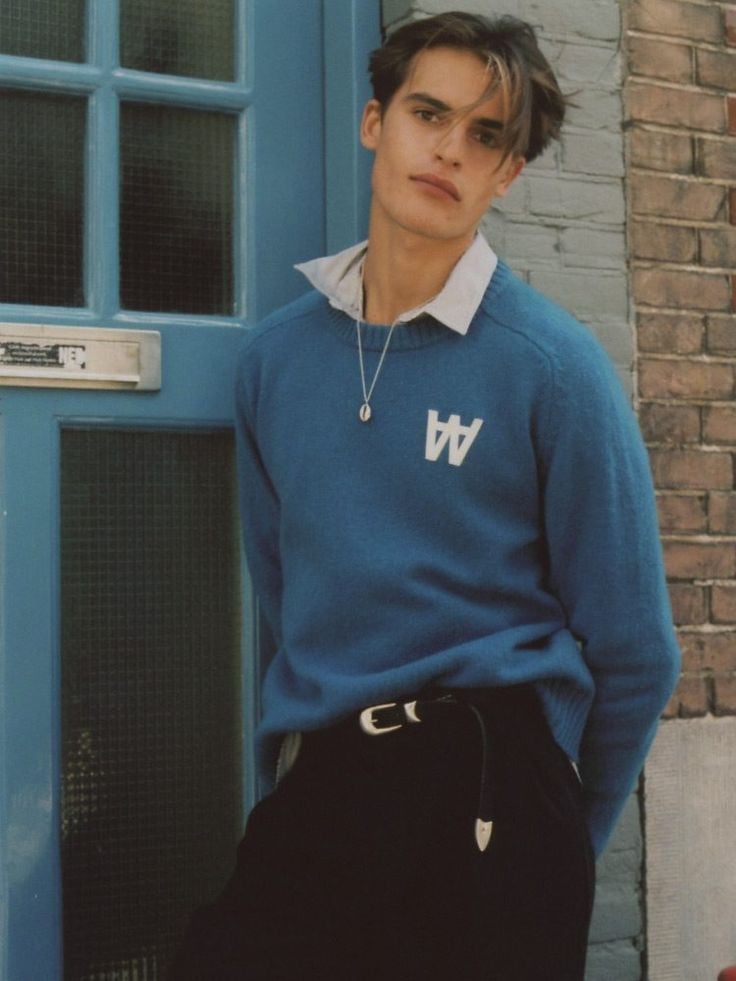
Polo shirts, with their collared design and classic silhouette, became a focal point in this revival, offering a versatile canvas for preppy style expression. The era embraced pastel colors, injecting a fresh and vibrant palette into the traditional polo shirt. The revival extended beyond garments, encapsulating an entire preppy lifestyle emphasizing a sense of cultivated ease.
In addition to polo shirts, the resurgence of preppy fashion incorporated other key elements. Chinos, with their tailored yet relaxed fit, became a staple bottom wear, complementing the timeless appeal of the polo shirt. Boat shoes, another preppy hallmark, made a comeback, adding a touch of nautical flair. The ensemble embodied a harmonious blend of sophistication and casual charm, capturing the essence of the preppy revival.
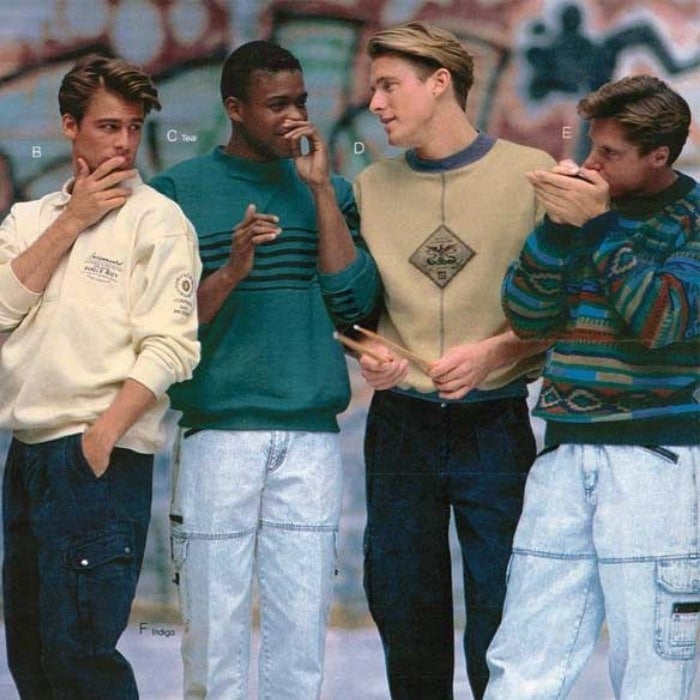
The ’90s preppy revival wasn’t just a nostalgic nod but a reimagining of classic elements in a contemporary context. This resurgence breathed new life into the polo shirt, elevating it beyond its sporty origins to symbolize refined yet accessible style. Influencing subsequent generations, the ’90s preppy revival solidified the timeless appeal of a well-tailored polo shirt and the accompanying preppy ensemble.
Pop Culture and Movie-Inspired Fashion
The ’90s, a dynamic era influenced by pop culture, witnessed iconic TV shows like “90210” and “Melrose Place” seamlessly integrating their impact into the fabric of men’s fashion. Characters and style moments from these cultural phenomena left an indelible imprint on ’90s men’s fashion, serving as enduring touchstones for those navigating the ever-evolving male style narrative.
In “90210,” the character of Brandon Walsh, played by Jason Priestley, epitomized the quintessential ’90s male style with his clean-cut, side-parted hairstyle. The show not only became a cultural touchstone but also a fashion guide for men seeking a balance between preppy sophistication and California cool.
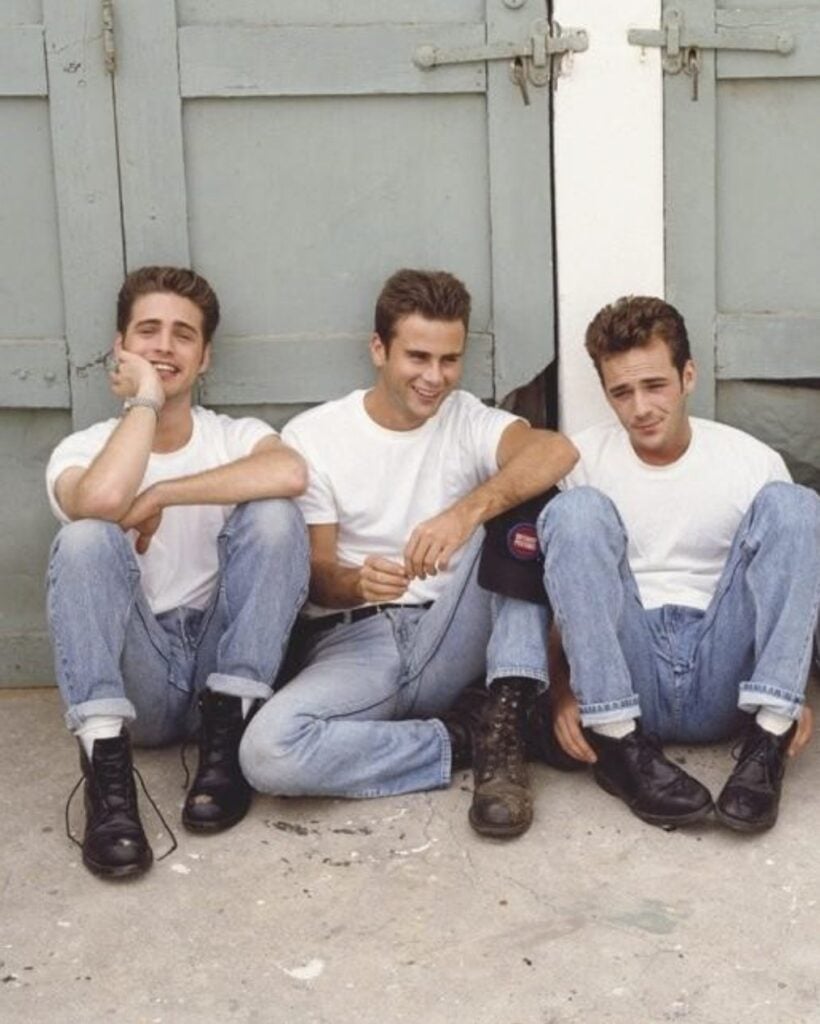
“Melrose Place” further enriched ’90s menswear with characters like Billy Campbell, portrayed by Andrew Shue, who brought the laid-back yet stylish aesthetic of Los Angeles to the forefront. His effortlessly tousled hair and casual ensembles became emblematic of the era’s approach to relaxed yet refined male fashion.
These cultural references, from Brandon Walsh’s side-parted charm to Billy Campbell’s laid-back allure, continue to permeate and inspire contemporary menswear fashion. They serve as living testaments to the enduring impact of ’90s pop culture on the ever-shifting landscape of men’s style, providing a timeless reference point for those navigating the complex tapestry of contemporary fashion.
Accessories: The Pinnacle of Individuality
In the dynamic landscape of ’90s men’s fashion, accessories weren’t just embellishments; they were powerful expressions of individual style. Items like chokers and wallet chains became iconic symbols of the era, infusing outfits with a distinctive touch. Accessories in ’90s fashion, highlighted were emblems of individuality and have an enduring impact on contemporary style.
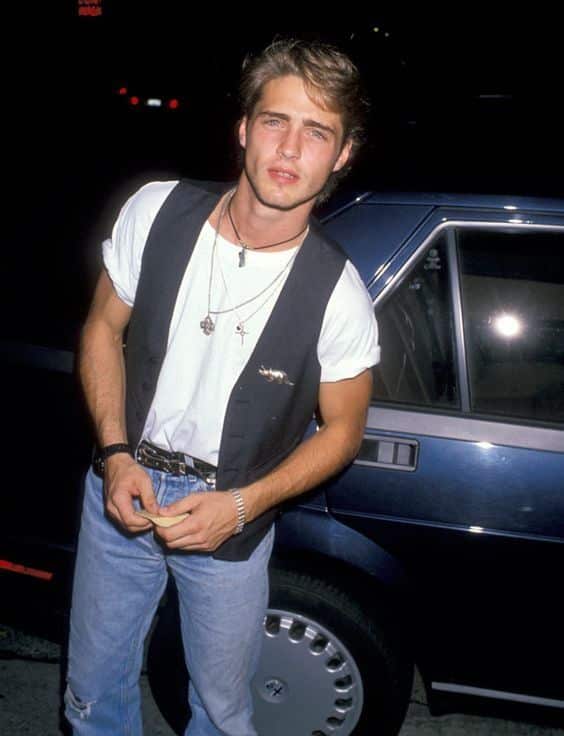
In the ’90s, accessories served as more than just fashion statements; they were conduits of self-expression. Chokers, representing rebellion and alternative style, and wallet chains, marrying functionality with edgy aesthetics, defined the era’s fashion landscape. From studded bracelets to bandanas, each accessory told a unique story, reflecting the wearer’s tastes, affiliations, and attitude.
The influence of ’90s accessories remains palpable. Designers and fashion enthusiasts continue to draw inspiration from the bold accessorizing of the ’90s, integrating these elements into modern styles. Chokers, once symbols of rebellion, have found a place in high fashion, and wallet chains have transformed into statement pieces that transcend their utilitarian origins.
Fashion’s Ongoing Nostalgia for the ’90s
The ’90s have experienced a resurgence in modern fashion, with designers and brands drawing inspiration from this iconic era. The nostalgia for ’90s fashion has led to a revival of iconic styles, demonstrating that the great fashion of the ’90s is not just a memory but a dynamic and ongoing influence on today’s style.
In summary, the 1990s were a transformative period for men’s fashion and hairstyles. Each trend carried its unique cultural and social significance, shaping the fashion landscape. The ’90s were not just a fashion era; they were a cultural statement, and their resonance continues to inspire and shape contemporary fashion.
These trends reflect the diversity and the eclectic nature of 1990s fashion, showcasing a blend of comfort, rebellion, and brand prominence that defined the era’s aesthetic.
Top 10 Men’s Fashion Designers Shows of the 1990s
The 1990s was a transformative decade for fashion, marked by a shift towards minimalism, the emergence of streetwear, and a blend of high fashion with casual, everyday looks. Here are ten of the most iconic men’s fashion designer shows from the 1990s, each noteworthy for its influence and representation of the era’s trends:
Watch Issey Miyake Men Fall 1996 by Naoki Takizawa Fashion Show:
- Gianni Versace Fall 1991 – Versace’s show was famous for its opulent and bold designs, influencing men’s fashion with a mix of baroque prints and luxurious materials.
- Helmut Lang Fall 1998 – Known for pioneering the minimalist trend in the 90s, Helmut Lang’s collection featured utilitarian designs and streamlined aesthetics, profoundly impacting menswear.
- Ralph Lauren Fall 1994 – Ralph Lauren showcased quintessentially American styles, focusing on preppy and classic designs that appealed to a broad audience and solidified his influence on 90s fashion.
- Calvin Klein Spring 1992 – Calvin Klein was central to the minimalist movement with his clean, understated designs that emphasized comfort and simplicity, becoming a definitive look of the decade.
- Issey Miyake Men Fall 1996 by Naoki Takizawa – The designs blended traditional Japanese techniques with contemporary fashion, showcasing structural forms and a sophisticated use of materials. This show marked a significant moment in the evolution of the Issey Miyake Men’s line.
- Tom Ford for Gucci Fall 1995 – Tom Ford’s work at Gucci redefined luxury fashion with his glamorous and sexy designs, reviving the brand and influencing men’s fashion with sharply tailored suits and a sleek aesthetic.
- Armani Fall 1996 – Giorgio Armani’s shows were pivotal for setting the standard in men’s tailoring, with a focus on soft tailoring which became a hallmark for menswear in the 90s.
- Hugo Boss Fall 1999 – This show solidified Hugo Boss’s reputation for impeccable tailoring. The designs featured clean lines and functional styles that appealed to the business-oriented consumer.
- Dries Van Noten Spring 1997 – Dries Van Noten’s collections are known for their eclectic mix of prints, luxurious fabrics, and layered styles, which were both innovative and influential in men’s fashion.
- Yohji Yamamoto Fall 1999 – Yohji Yamamoto’s approach to fashion design, featuring avant-garde techniques and a focus on drapery and structure, offered a different aesthetic to men’s fashion that was both artistic and influential.
These shows not only defined the fashion of the 90s but also set trends that influenced the direction of men’s fashion well into the 21st century. Each designer brought a unique vision that echoed the cultural shifts and aesthetic preferences of the decade.